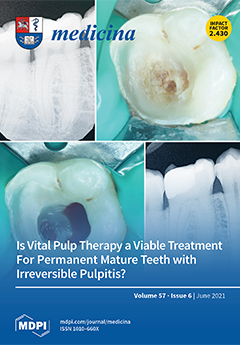Background and Objectives: The aim of this study was to investigate parameters that can be used to predict mortality in patients diagnosed with COVID-19 in the emergency department (ED).
Materials and Methods: Patients diagnosed with COVID-19 in the ED were included in this prospective study. The patients were divided into two groups. The surviving patients were included in Group 1 (survivors), and the patients who died were included in Group 2 (non-survivors). The electrocardiogram (ECG), laboratory results and chest computerized tomography (CCT) findings of the two groups were compared. The CCT images were classified according to the findings as normal, mild, moderate and severe.
Results: Of the 419 patients included in the study, 347 (83%) survived (survivor) and 72 (17%) died (non-survivor). The heart rate and respiratory rate were found to be higher, and the peripheral oxygen saturation (SpO
2) and diastolic blood pressure (DBP) were found to be lower in the non-survivor patients. QRS and corrected QT interval (QTc) were measured as longer in the non-survivor patients. In the CCT images, 79.2% of the non-survivor patients had severe findings, while 11.5% of the survivor patients had severe findings. WBC, neutrophil, NLR, lactate, D-dimer, fibrinogen, C- Reactive Protein (CRP), urea, creatinine, creatine kinase-MB (CK-MB) and hs-Troponin I levels were found to be higher and partial pressure of carbon dioxide (PCO
2), base excess (BE), bicarbonate (HCO
3), lymphocyte eosinophil levels were found to be lower in non-survivor patients. The highest AUC was calculated at the SpO
2 level and the eosinophil level.
Conclusions: COVID-19 is a fatal disease whose mortality risk can be estimated when the clinical, laboratory and imaging studies of the patients are evaluated together in the ED. SpO
2 that is measured before starting oxygen therapy, the eosinophil levels and the CT findings are all important predictors of mortality risk.
Full article






